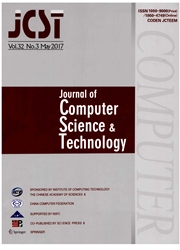

 中文摘要:
中文摘要:
在这篇论文,为在 AVS 视频编码标准编码转变剩余的一个基于上下文的 2D 可变长度 Coding (C2DVLC ) 方法被介绍。在 C2DVLC 的一个特征是多重 2D-VLC 桌子的用法,另一个特征是简单 Exponential-Golombcodes 的用法。C2DVLC 采用基于上下文的适应多重桌子编码为更高编码效率利用在一块的 DCT 系数之间的统计相关。Exp-Golomb 代码一重新申请为更低的存储器需求编码零个系数和非零系数的跑长度的对。C2DVLC 以计算时间和存储器要求是一个低复杂性编码者。当与传统的 2D-VLC 相比象那一样的编码方法在 MPEG-2 使用了时,试验性的结果证明 C2DVLC 能为测试录像在一般水准获得 0.34dB。有在 H.264/AVC 的 CAVLC 的 Andcompared, C2DVLC 显示出类似的编码效率。
 英文摘要:
英文摘要:
In this paper, a Context-based 2D Variable Length Coding (C2DVLC) method for coding the transformed residuals in AVS video coding standard is presented. One feature in C2DVLC is the usage of multiple 2D-VLC tables and another feature is the usage of simple Exponential-Golomb codes. C2DVLC employs context-based adaptive multiple table coding to exploit the statistical correlation between DCT coefficients of one block for higher coding efficiency. ExpGolomb codes are applied to code the pairs of the run-length of zero coefficients and the nonzero coefficient for lower storage requirement. C2DVLC is a low complexity coder in terms of both computational time and memory requirement. The experimental results show that C2DVLC can gain 0.34dB in average for the tested videos when compared with the traditional 2D-VLC coding method like that used in MPEG-2. And compared with CAVLC in H.264/AVC, C2DVLC shows similar coding efficiency.
 同期刊论文项目
同期刊论文项目
 同项目期刊论文
同项目期刊论文
 期刊信息
期刊信息
